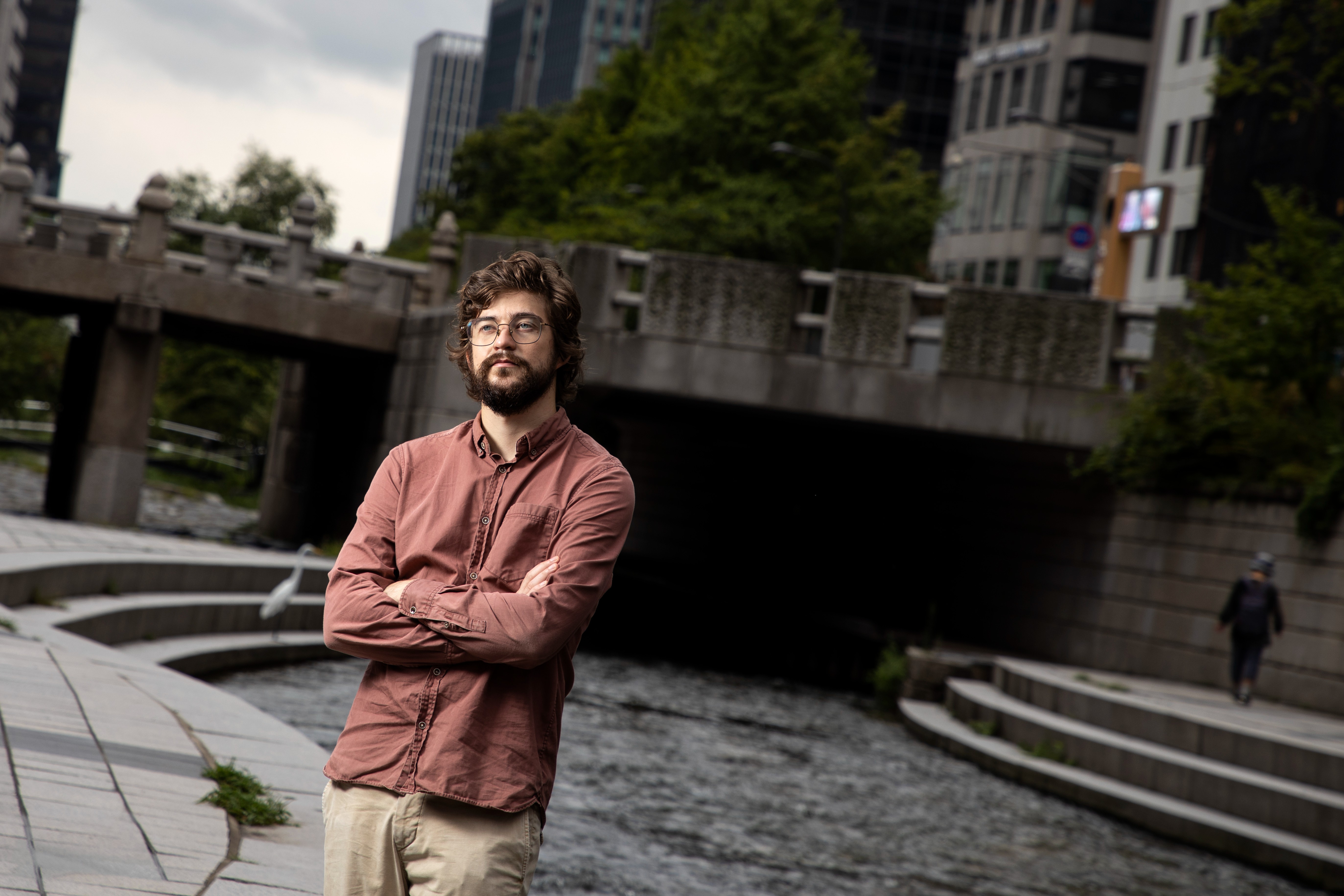[Sept] Danish journalist fascinated by camping in Korea’s wilderness
Date Sep 01, 2021
 Danish freelance journalist Morten Soendergaard. Photo by Choi Won-suk
Danish freelance journalist Morten Soendergaard. Photo by Choi Won-suk
●Korea is a paradise for campers, says Morten Soendergaard.
●Thought-provoking technology makes Korea an ideal location to cover digital stories.
Korea is one of the best countries for camping out in nature. Mountains draped in color-changing deciduous forests cover 70 percent of its territory, and there are several great spots for viewing sunrises and sunsets.
Danish freelance journalist Morten Soendergaard, 28, has been discovering Korea’s unparalleled appeal for campers since his arrival in Seoul in January 2019. He has been going camping whenever he can squeeze free time between his coverage of the country for several media outlets in the United States, Denmark and the United Arab Emirates.
“Korea is an amazing country for campers. I love looking at the map and finding a place that looks interesting, taking my tent there and going off the grid for the weekend,” he told Korea Here & Now on August 21.
Camping in the middle of nowhere deep in a forest cut off from bustling urban life, he said, allows him to block out disruptions, interact with nature directly and think about himself and life: “There’s nothing better than a day spent hiking on a small mountain, and then submerging yourself in the ocean or a lake, cooking on your portable stove and reading a good book alone in the wilderness.”
Sipping a cup of freshly brewed coffee while watching the sun rise over the mountains is another of the simple pleasures that camping in Korea affords him.
Like other foreign correspondents in Seoul, Soendergaard covers a wide range of stories about Korea: from technology, to North Korea, to the crypto currency craze, to the LGBT community.
At the top of his latest interests are digital humans – AI-powered, virtual human beings – adding that he fully enjoyed working on a related story where he tried to find out how they are redefining reality. “I like stories that pose philosophical questions,” he said.
Digital humans in Korea made news in December when insurance firm Shinhan Life disclosed that the young woman featured in their commercials, “Rozy,” is actually a virtual character created by SIDUS Studio X. She remains a social media influencer with 51,000 followers.
Like humans, Rozy uploads photos about her life such as shopping excursions and experiences enjoying nature. Shinhan Life said that it chose to use the virtual character as their model to break stereotypes about the insurance company and to attract the interest of Millennials and Generation Z.
North Korea is another topic Soendergaard is enthusiastic about, in particular its nuclear and missile programs and their impact on the arms race across East Asia.
When asked what he considers to be the hardest part of covering stories as a foreign correspondent in Seoul, he replied that, ironically, it is selling big stories to his editors in Europe.
According to him, Korea and Denmark are far from each other and share little common ground in terms of news stories.
“The most difficult part about covering Korea is actually getting my editors to care about the stories that I pitch to them. Denmark and Korea are very far apart, both physically and mentally, so it is hard to give a story here the attention it needs there,” he said.
The mismatch between the actual weight of Korean news and European editors’ judgment of it sometimes leads to small, trivial stories gaining disproportionately more attention than big issues such as security, he noted.
“When Korea banned uptempo music in gyms, that was a fun, small story, and a lot of editors were interested in covering it. Then the news about the Moon Jae-in government’s plan to strengthen the country’s military capabilities came out, but that didn’t get the same attention, which I personally think is a shame,” he said.
Soendergarrd is scheduled to leave Korea in January next year.
Asked if there is any advice he’d like to share with incoming reporters, he said that, in his experience, great stories come when journalists think outside the box. He emphasized the importance of curiosity and interest as key parts of a journalist’s character and work ethic.
“There are classic hard news stories that need to be covered, but as journalists, we also need to find our own stories and dig into them. I myself tried to do this, and found some stories that I genuinely think are very interesting,” he said. “There is a possibility that your editors may not find them interesting and may only assign you to write a small article about them. But don’t be frustrated. As journalists, we also have to write about things that we like, not just do what pays the bills.”
Before South Korea, Soendergaard lived and worked in Lebanon as a freelance journalist. He has been in this field for four years.
**If you have any questions about this article, feel free to contact us at kocis@korea.kr.**

The Ministry of Culture, Sports and Tourism's "Korea Here & Now" work can be used under the condition of "Public Nuri Type 1 (Source Indication)."




